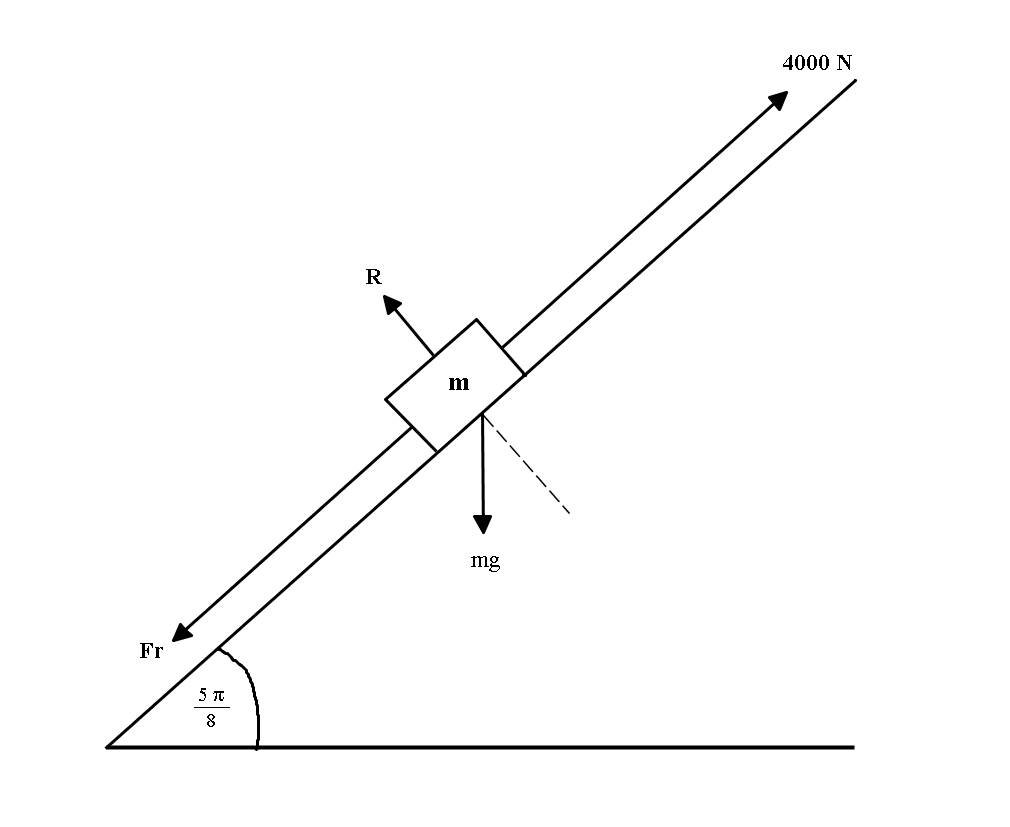A truck pulls boxes up an incline plane. The truck can exert a maximum force of 4,000N. If the plane's incline is (5π)/8 and the coefficient of friction is 9/8, what is the maximum mass that can be pulled up at one time? Thanks
3 Answers
Consider the physical situation, pictured in the free-body diagram,

Given,
To figure out the maximum mass the truck can pull, we set,
Hence, the truck can pull,
is the maximum mass the truck can pull up the ramp at once.
By extension, any mass
Explanation:

If we view this as the mass is about to slip up the plane, then:
The frictional force
Resolving:
Perpendicular:
Parallel:
Limiting equilibrium:
Substituting:
Maximum mass that can be pulled by the truck:
This is what I get
Explanation:
Normally text books state angle of incline as less than
Another thing to be noted is that
Now as per convention angles are defined with respect to positive
Maximum pulling force of truck
Downward pulling force along the incline
Equating both for
m_max g(sintheta+mucostheta)=4000
=>m_max=4000/(9.81(sin67.5^@+9/8xxcos67.5^@))
=>m_max=301\ kg


